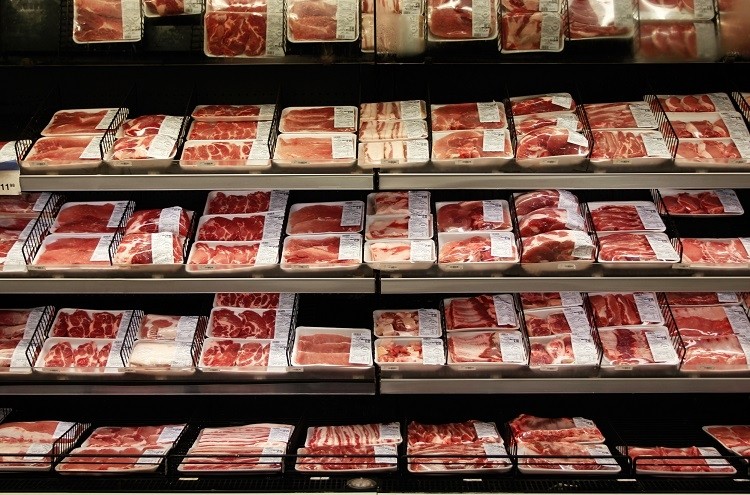Why Residents Love Bagley Farms Meat Market Edwardsville IL for Their Meat Shopping
Why Residents Love Bagley Farms Meat Market Edwardsville IL for Their Meat Shopping
Blog Article
Reveal the Art of the Butcher's Cut in a Modern Meat Market
In the ever-evolving landscape of modern meat markets, the butcher's cut has transcended its traditional origins, combining old-time workmanship with contemporary practices. What genuinely sets the modern-day butcher apart is their capability to build a much deeper connection in between customers and the beginnings of their meat.
Advancement of Butchery Methods
The advancement of butchery strategies mirrors an abundant tapestry of technology and adjustment driven by advancements in modern technology, modifications in consumer demand, and a much deeper understanding of meat science. Historically, butchery was a craft passed down via generations, with techniques refined over centuries to make the most of yield and taste. The commercial change ushered in automation, transforming traditional techniques and making it possible for massive processing.
The mid-20th century saw butchery methods even more improved by scientific insights into muscular tissue biology and meat aging, improving both tenderness and taste. Innovations like vacuum cleaner product packaging and refrigeration extended item shelf-life, permitting butchers to diversify offerings and enhance quality control. This period additionally marked the surge of specialized tools, such as band saws and meat slicers, which enhanced precision and efficiency in meat handling.

Digital systems currently assist in monitoring pet provenance and optimizing cuts to satisfy specific customer preferences. Furthermore, a revival in artisanal butchery has actually arised, mixing conventional abilities with contemporary understanding to provide to consumers looking for ethical and lasting meat choices.
Recognizing Meat Cuts
Comprehending the details of meat cuts is essential for both butchers and customers looking for top quality and worth. For butchers, specific cuts mirror ability and regard for the craft, ensuring minimal waste and ideal yield.

Comprehending muscular tissue composition is essential; muscular tissues utilized a lot more frequently by the pet have a tendency to be harder and are best matched for slow food preparation techniques, while less-used muscles, like those located in the loin, are extra tender and perfect for grilling or roasting. Knowledge with these distinctions encourages customers to make enlightened choices, boosting their culinary endeavors.
Selecting Top Quality Meat
Selecting the ideal meat entails even more than simply choosing a visually attractive piece from the screen. The art of choosing quality meat requires a critical eye and expertise of certain features that symbolize freshness and quality.
Secondly, take into consideration the marbling, which refers to the white streaks of fat within the muscle. Correct marbling is an essential indication of tenderness Click Here and taste, as it thaws during food preparation, enhancing the meat's juiciness. Bear in mind, greater marbling usually associates pop over to these guys with premium high quality cuts, such as USDA Prime.
Structure is one more crucial factor; meat must really feel solid to the touch, not slimy or overly soft. Additionally, be conscious of the fragrance. Fresh meat ought to have a clean, neutral scent, without any sour or repulsive odors.
Pairing Cuts With Food Preparation Approaches

Conversely, harder cuts like brisket and chuck roast are rich in collagen, which breaks down right into gelatin when prepared slowly. These cuts are excellent for braising or slow roasting, enabling the meat to tenderize over time and create deep, complicated tastes. Cuts such as brief ribs and pork shoulder make out well with slow-cooking methods, where expanded cooking times transform their durable appearances right into succulent dishes.
Lamb shanks and oxtail, which need long term cooking to tenderize, are excellent prospects for stewing or slow-moving simmering. These techniques coax out abundant, passionate flavors while preserving wetness. By understanding the one-of-a-kind qualities of each cut, cooks and home cooks alike can raise their cooking productions, making sure each recipe is both satisfying and memorable.
The Butcher's Duty Today
Browsing the developing landscape of the contemporary meat market, the butcher's role today extends past plain prep work of cuts. Contemporary butchers are culinary craftsmens, educators, and advocates for lasting techniques.
Along with crafting accurate cuts, butchers now involve directly with customers, using cooking suggestions and customizing choices to match specific demands and preferences. Their expertise in meat aging, marbling, and taste accounts equips customers to make informed important site choices, boosting their culinary experiences. This personalized service exhibits the butcher's advancing duty as a trusted expert in the cooking area.
Additionally, butchers are essential in decreasing waste, making use of entire animals to develop diverse items such as sausages and supplies. This extensive strategy not only respects the pet but also lines up with modern sustainability objectives. By doing this, the modern-day butcher personifies both custom and advancement, adapting to an ever-changing market while protecting the creativity and honesty of their craft.
Final Thought
The contemporary butcher's craft intricately weaves typical strategies with modern advancements, emphasizing lasting methods and honest sourcing. Mastery in understanding diverse meat cuts and quality indications encourages butchers to give educated recommendations, aligning specific cuts with optimal cooking approaches. This expertise not just elevates culinary experiences however also strengthens the connection in between consumers and the origins of their food. By recognizing historic methods while embracing modern demands, the butcher's function stays crucial in today's innovative meat market (bagley farms meat market edwardsville il).
Report this page